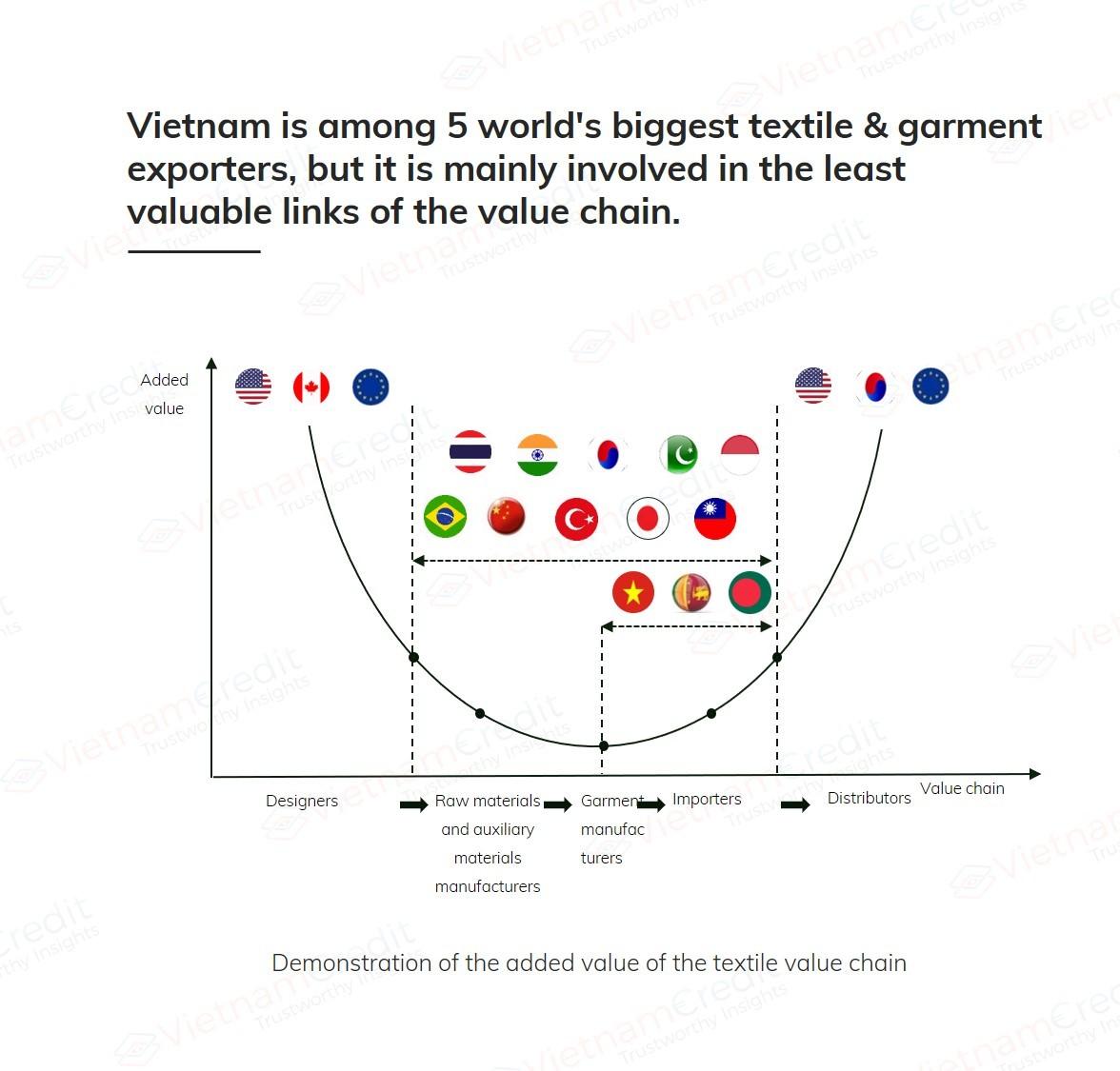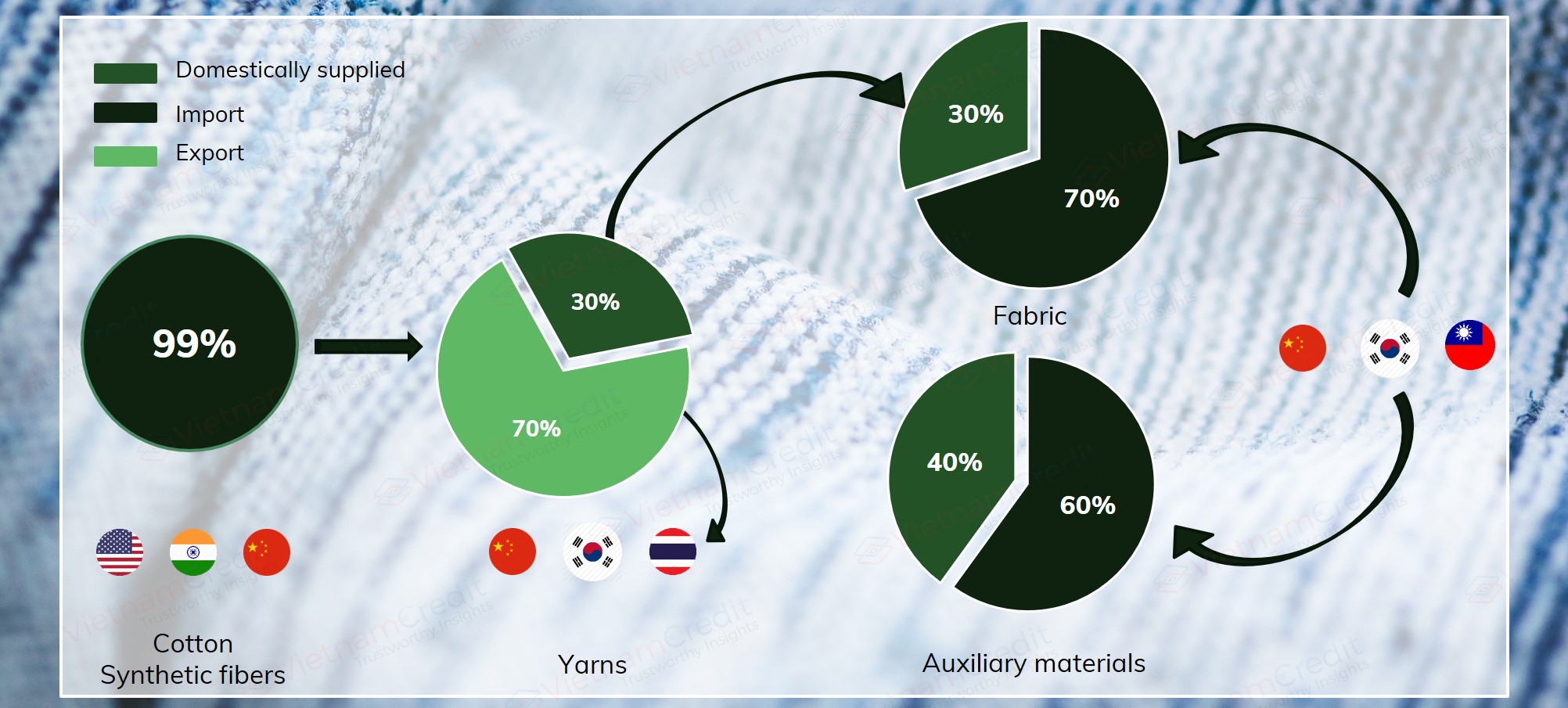2021 was a really difficult year for Vietnam's textile and garment industry when the supply chain was constantly disrupted. However, overcoming all difficulties, the industry still maintained a good growth momentum.
In 2022, it is expected that the Covid-19 epidemic will still pose a lot of threats to the development of this industry, however, many international organizations believe that Vietnam's textile and garment industry will recover strongly in the coming time.
Vietnam's textile and garment export market share
While in the first quarter of 2021, textile and garment companies were excited thanks to the increase in the number of orders, things were upended right after that. The fourth outbreak of the Covid-19 pandemic in Vietnam caused the production of textile and garment enterprises to be stagnant as the supply chain was constantly broken.

Hope returned to the textile industry in the fourth quarter of 2021 when the southern provinces gradually reopened and businesses started to return to production. With lots of efforts, Vietnam's textile and garment industry has overcome difficulties and maintained a good growth momentum in 2021, with export turnover estimated at 39 billion USD, an increase of 11.2% compared to 2020 and 0.3% compared to 2019. Surpassing Bangladesh, in 2021, Vietnam's textile and garment export market share has risen to the second position in the world and is believed to recovery quickly in 2022.
After a nearly two-year hiatus, the global textile and garment industry has begun to regain its footing, fueled by the dramatic rise of e-commerce. Despite continued difficulties, demand experienced an increase in the second half of 2021. In the US, pent-up demand led to a growth boom. McKinsey estimates that global fashion sales in 2021 may reach 96% of 2019 levels.
Vietnam's textile and garment industry went through many difficulties and pressures when raw material costs were inflated, freight rates increased, and labor shortages occurred after the period of social distancing. While Vietnam decelerated, its competitors grew better, such as China (+12% yoy), India (+52% yoy) and Bangladesh (+13% yoy).
While most companies in the textile and garment industry have experienced an unfavorable recovery, yarn companies, especially those specializing in cotton yarn witnessed the opposite. Global yarn prices have been higher than 2019 since the end of February and peaked in Q3/2021 when polyester and cotton yarn prices increased by about 30%-50% year-on-year, driven by spikes in cotton and oil prices. This is due to the rapid increase in demand for yarn, as China's yarn supply has gradually been depleted.
On the other hand, the US ban on cotton originating from the Xinjiang region also caused supply chain disruptions and pushed cotton prices higher. In the first 11 months of 2021, Vietnam's yarn export turnover reached 5.1 billion USD (+38% over the same period), of which exports to China (accounting for 54% of total yarn export turnover) increased by 44%.
The above business context caused listed textile companies to record mixed business results in the first 9 months of 2021. Northern-based garment companies, such as TNG and MSH, were not affected by social distancing measures in the third quarter of 2021. With some difficulty, it is not surprising that companies in this region enjoyed high NPATMI growth of 31% and 105%, respectively, over the same period last year.

Forecasts for 2022
McKinsey predicts that global fashion sales in 2022 may be around 103%-108% of 2019 levels. However, overall revenue is expected to fully recover next year, with growth likely coming from the US and China - when Europe faltered. Low-cost and high-end fashion will continue to outperform.
At the same time, value chain sustainability continues to be increasingly important to brands and consumers, not only in terms of open-loop recycling but also closed-loop recycling. The market is expected to remain complicated with new challenges in the context of logistics bottlenecks, production disruptions, high transportation costs and raw material shortages. These factors may further increase input costs and imbalance between supply and demand.
VITAS forecasts that Vietnam’s export turnover in 2022 will reach 43 billion USD (+10% over the same period). The cotton yarn industry, after growing rapidly in 2021, will gradually find a balance point in 2022.

Regarding policy moves, the Ministry of Industry and Trade recently imposed a 5-year import tax on imported polyester fibers (types POY, DTY and FDY) from China (17.5% ), India (54.9%), Indonesia (21.9%), and Malaysia (21.5%). This will benefit most of the domestic yarn companies, especially Century Yarn (STK) as the company can expand domestic consumption in line with the current capacity expansion plan.
In 2021, the textile and garment industry has been revalued to reflect a strong recovery and a positive medium-term outlook. It is believed that the revaluation may happen again when the plan to develop the domestic fabric supply becomes clearer, helping the industry reap many benefits from the EVFTA. However, this is unlikely to happen overnight, which will be a challenge for textile and garment stocks when trading at a higher P/E than in 2021.
Source: General Department of Customs, SSI Research


























































